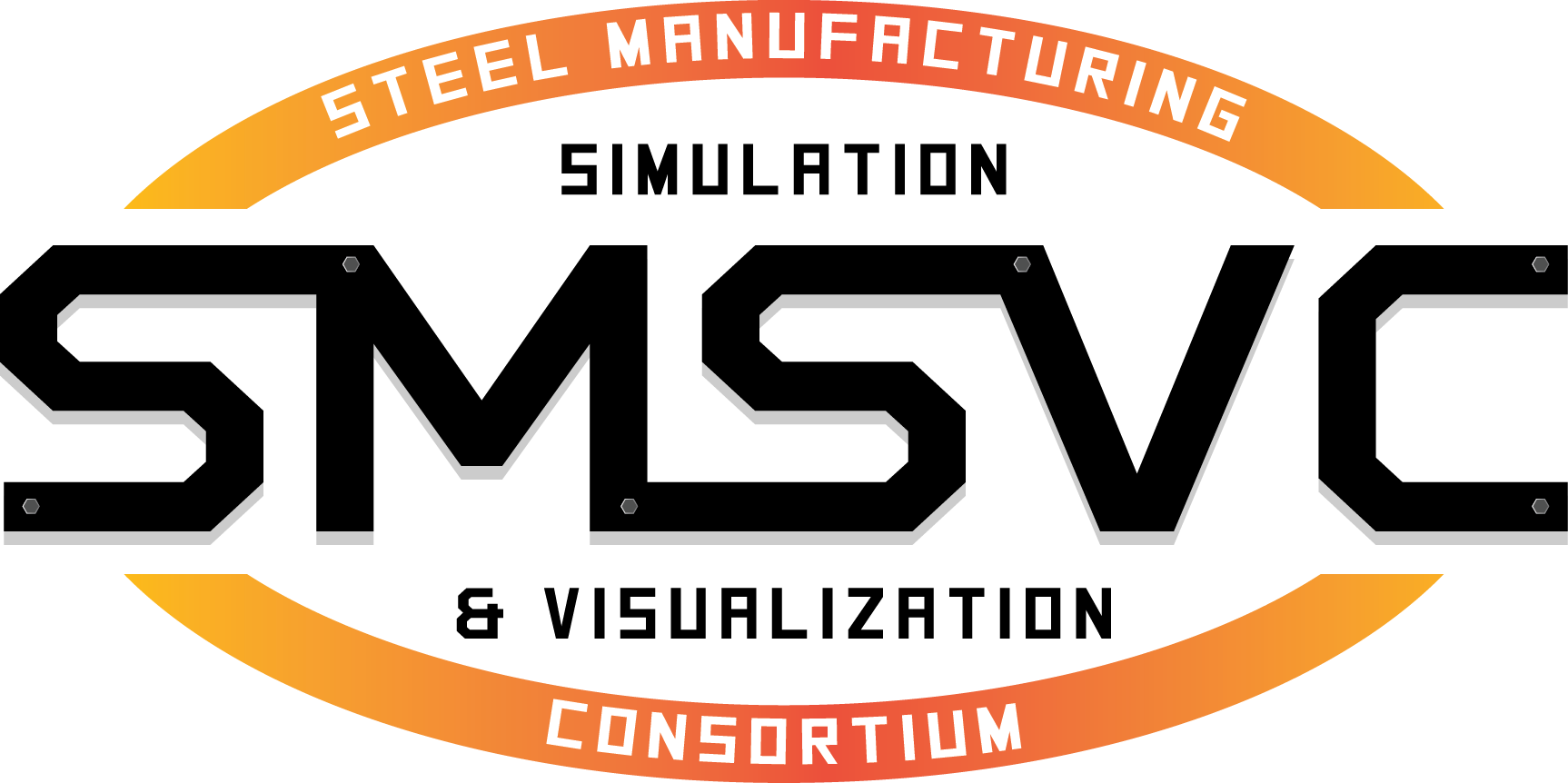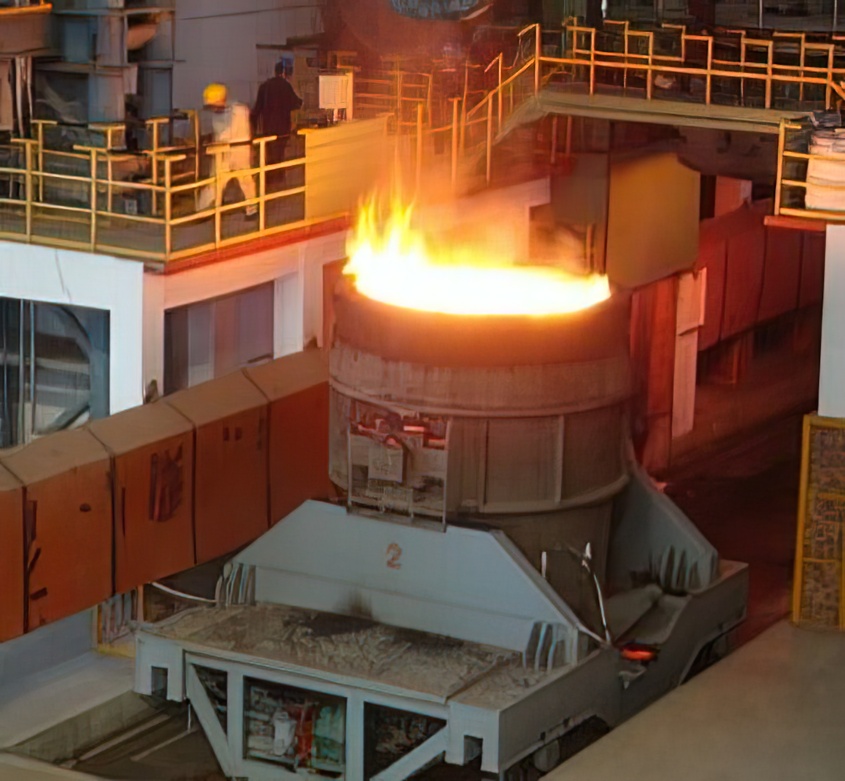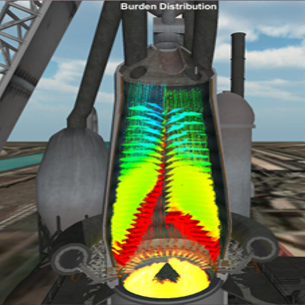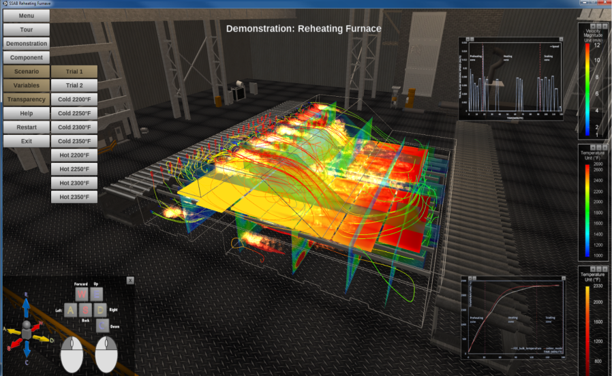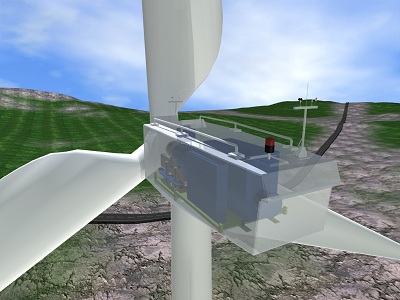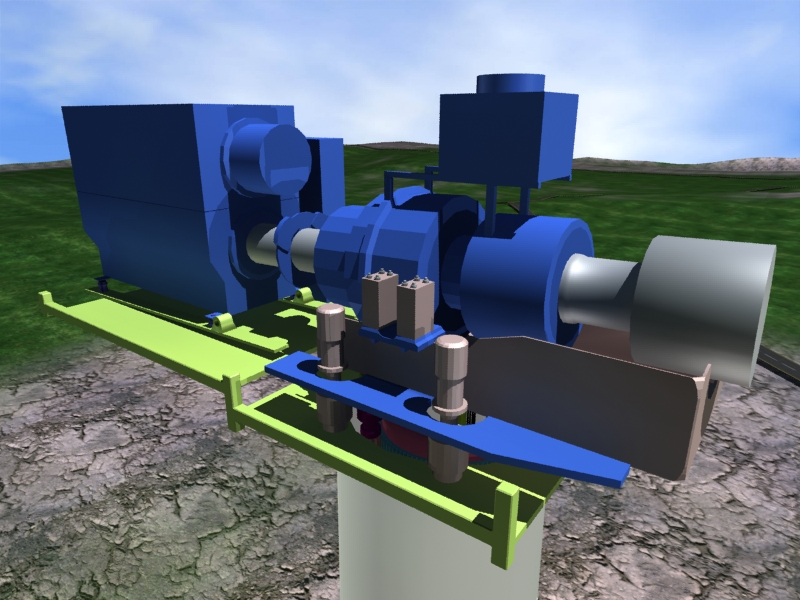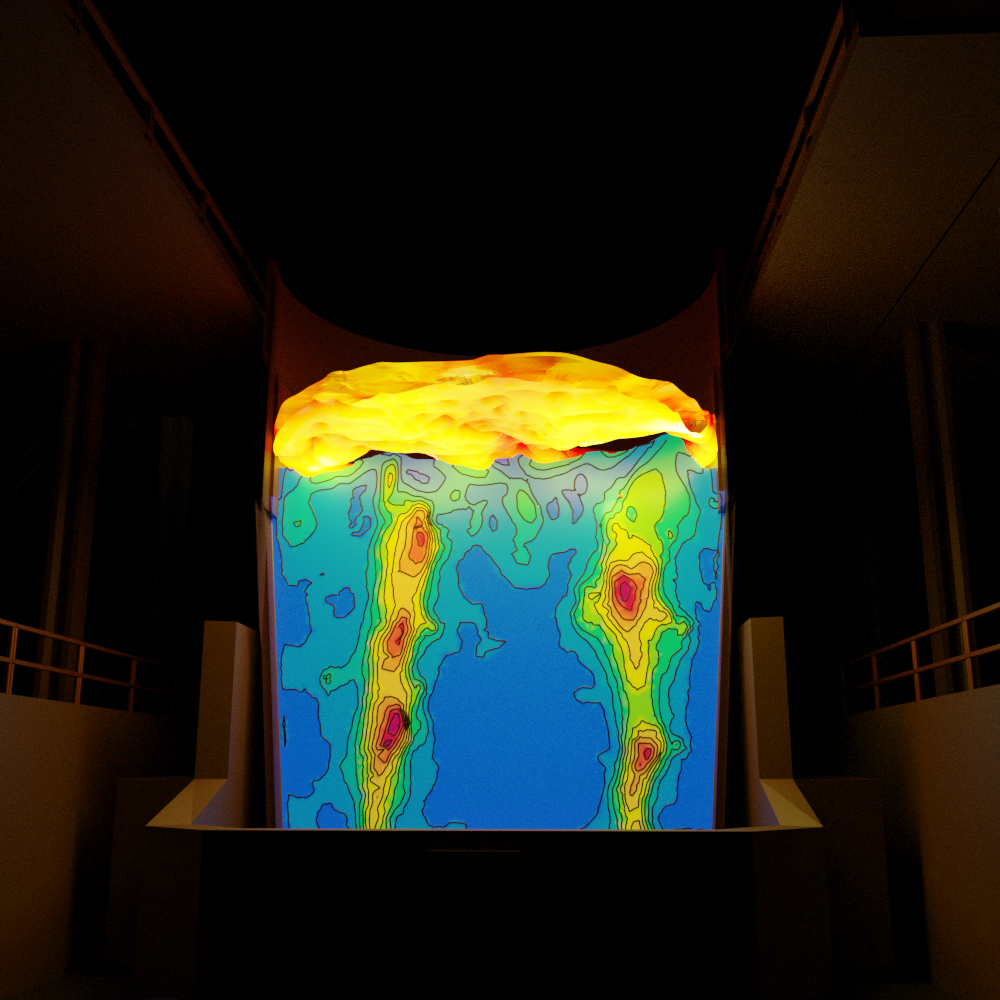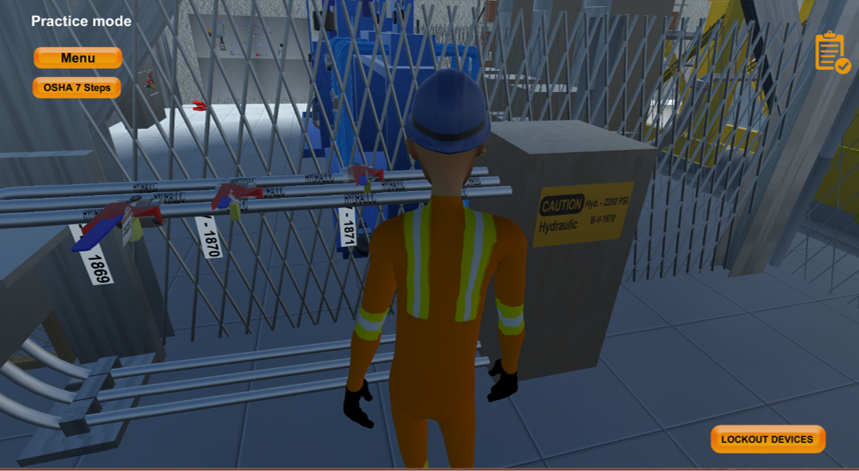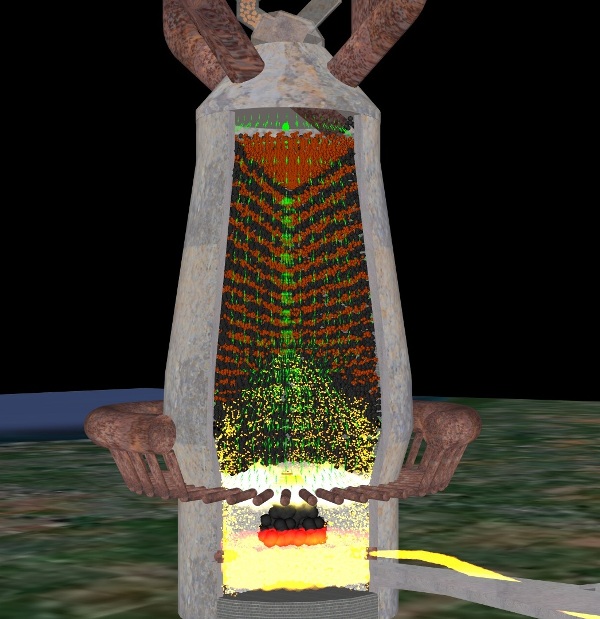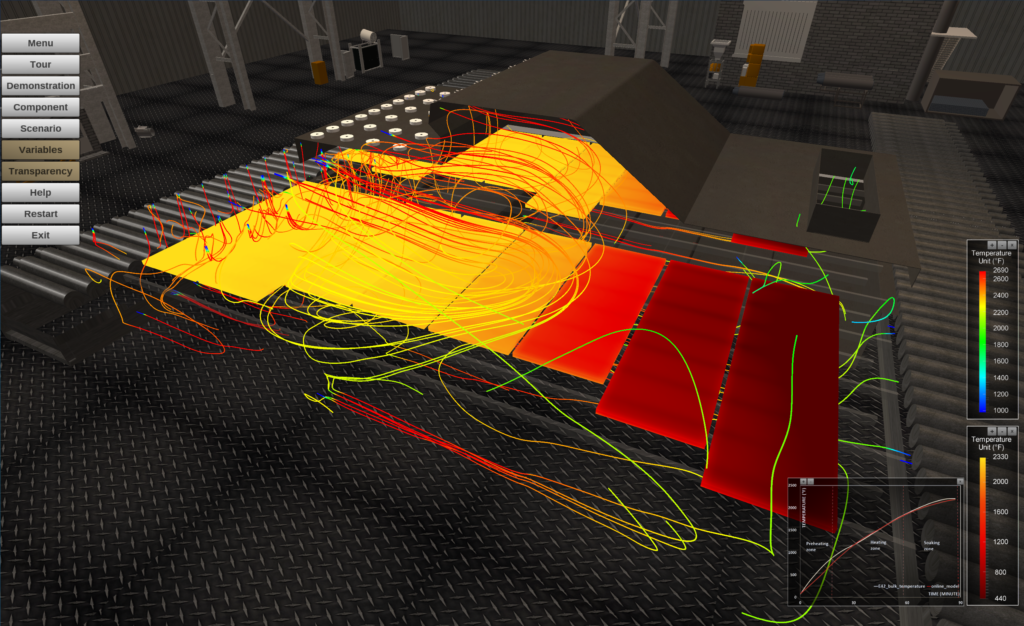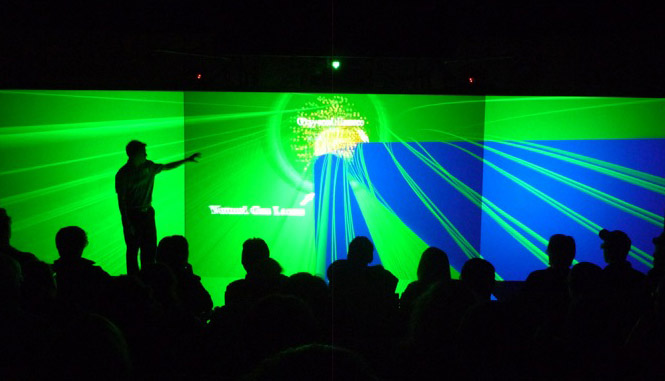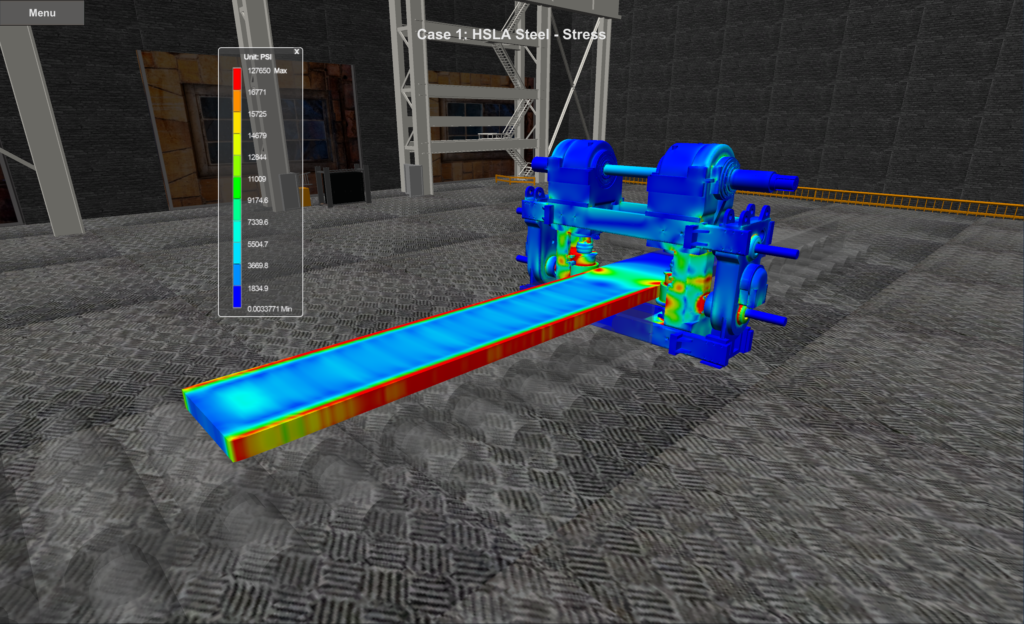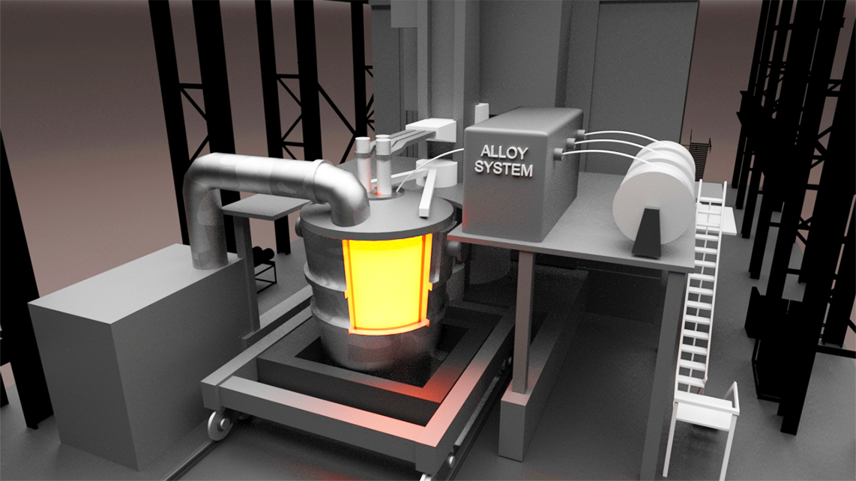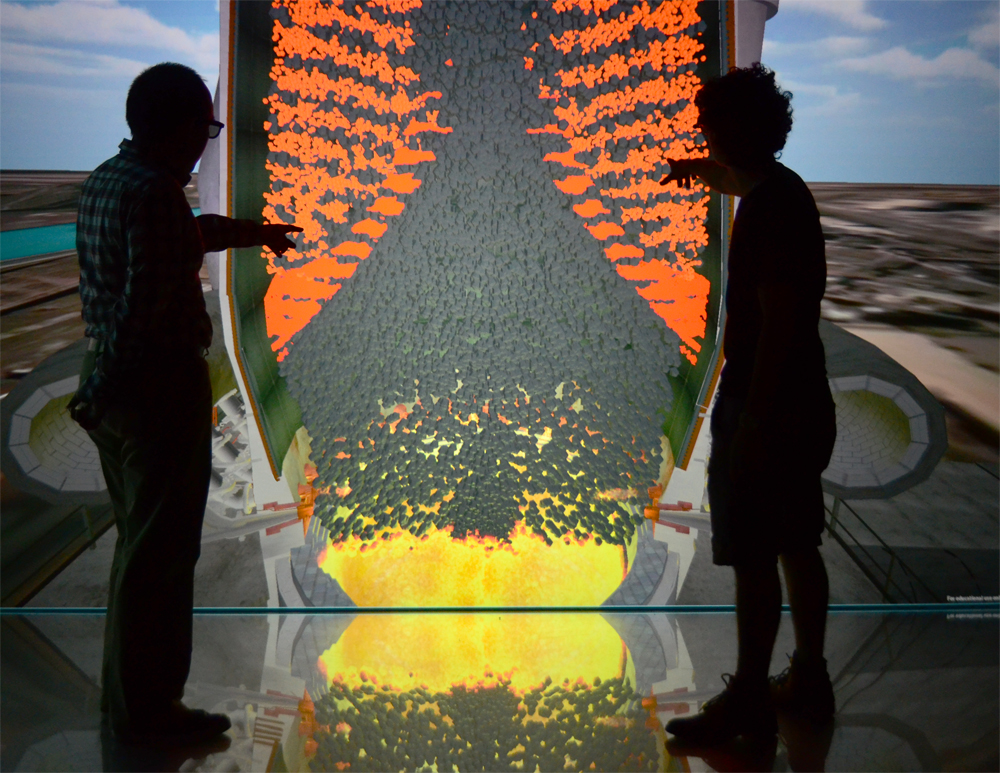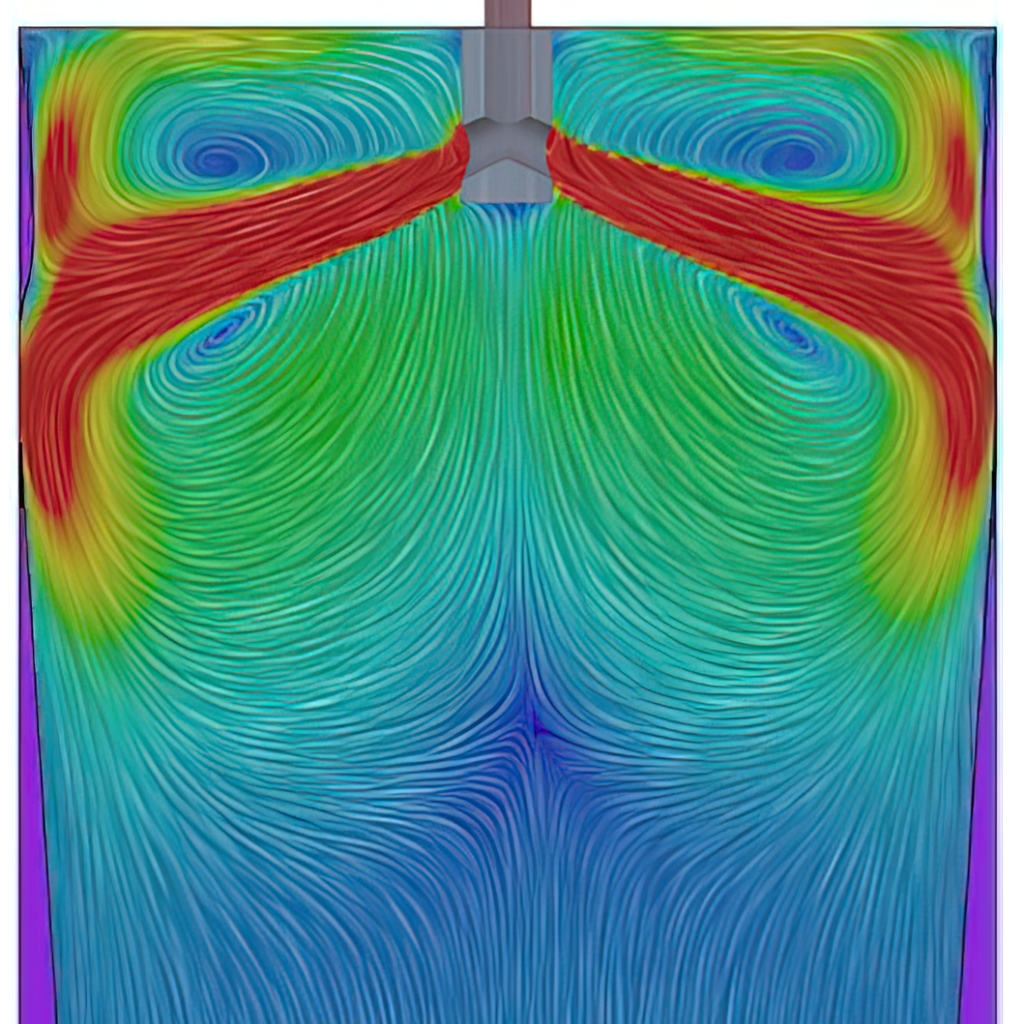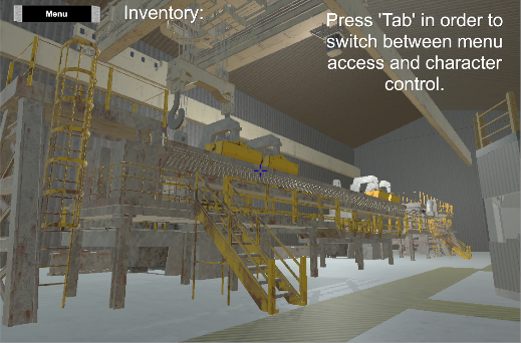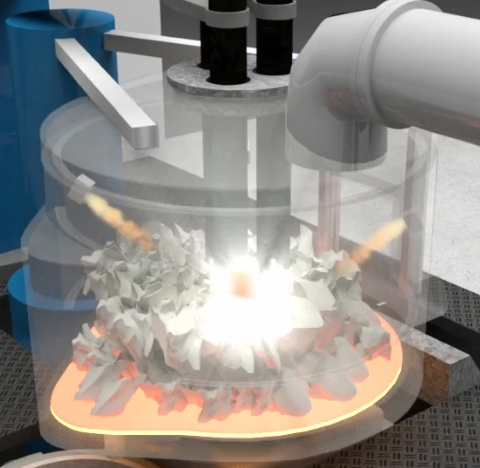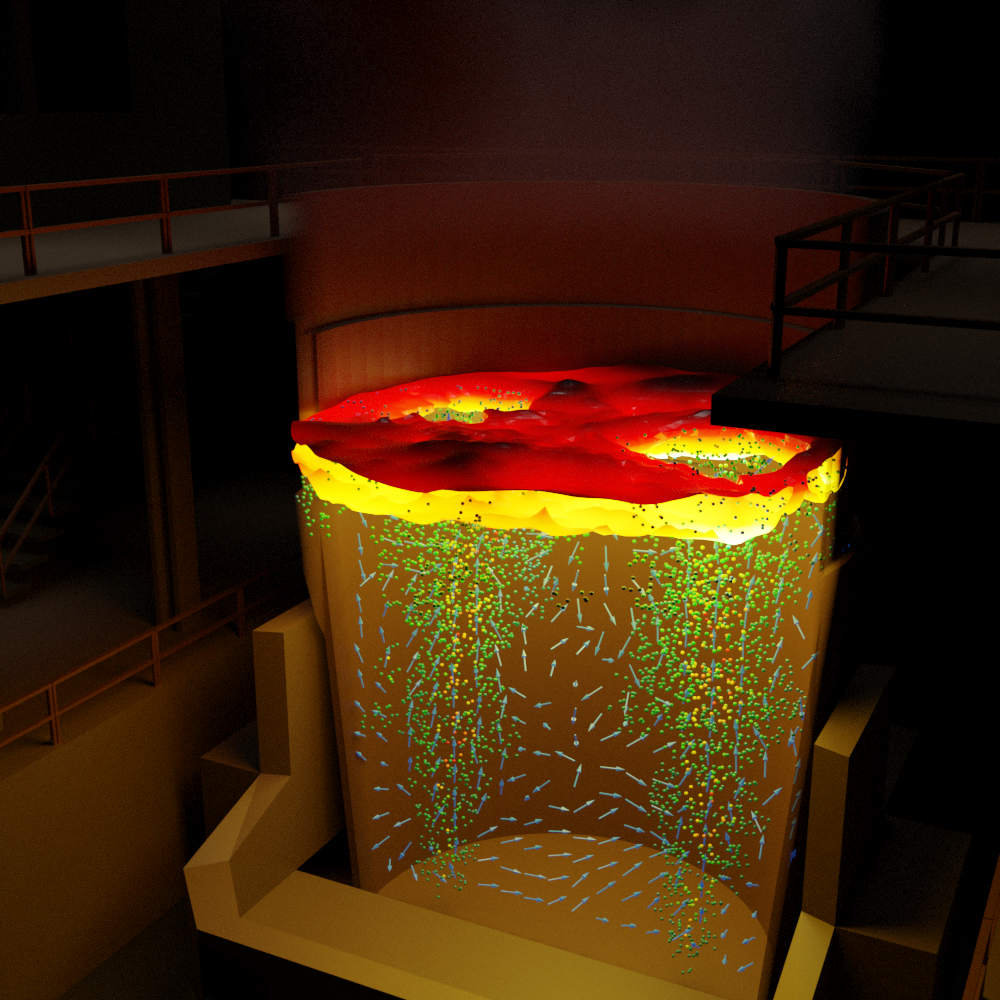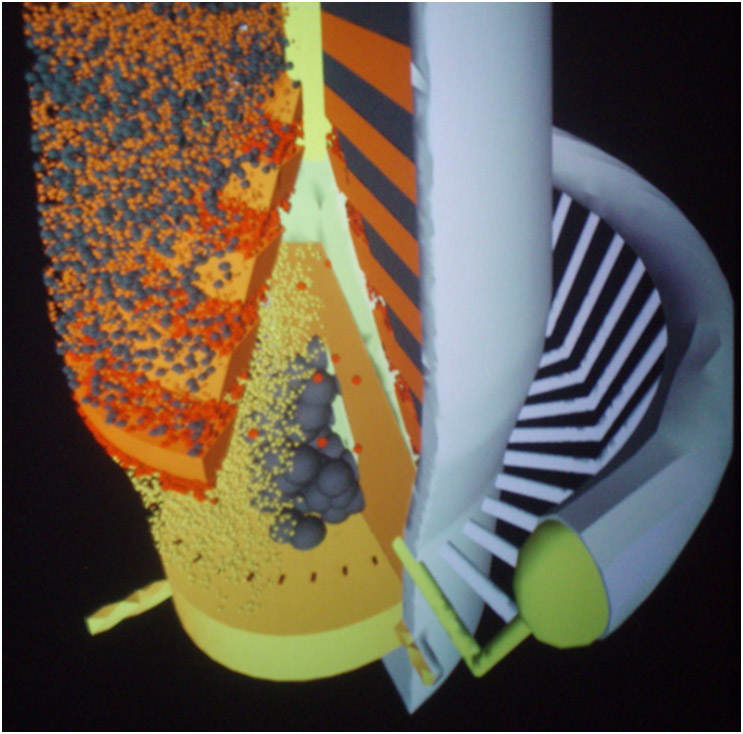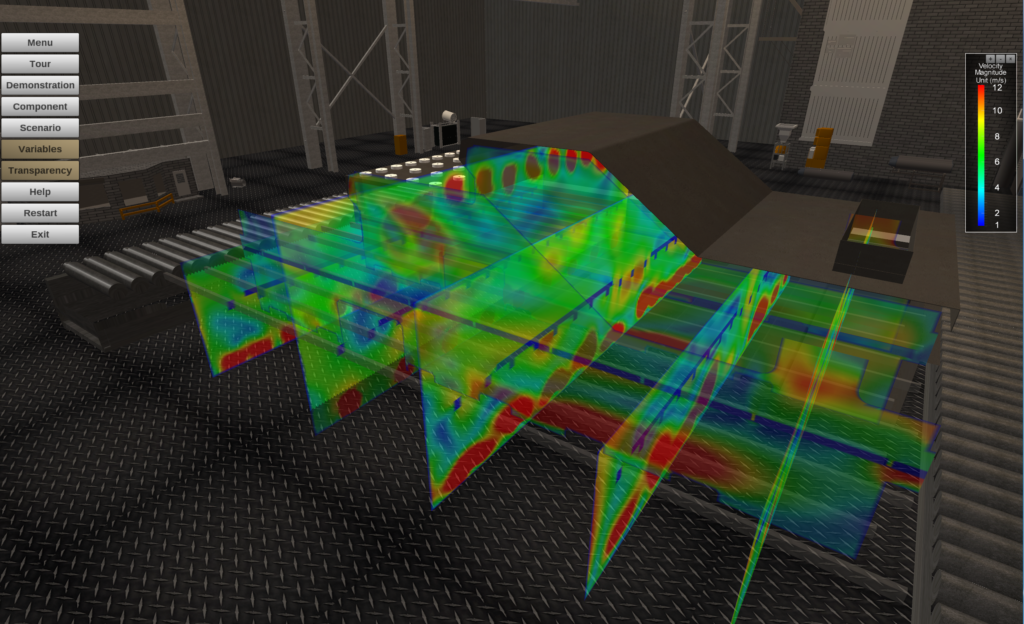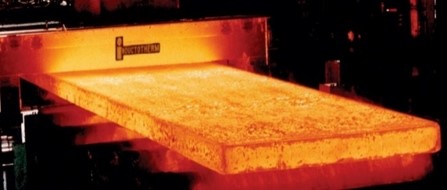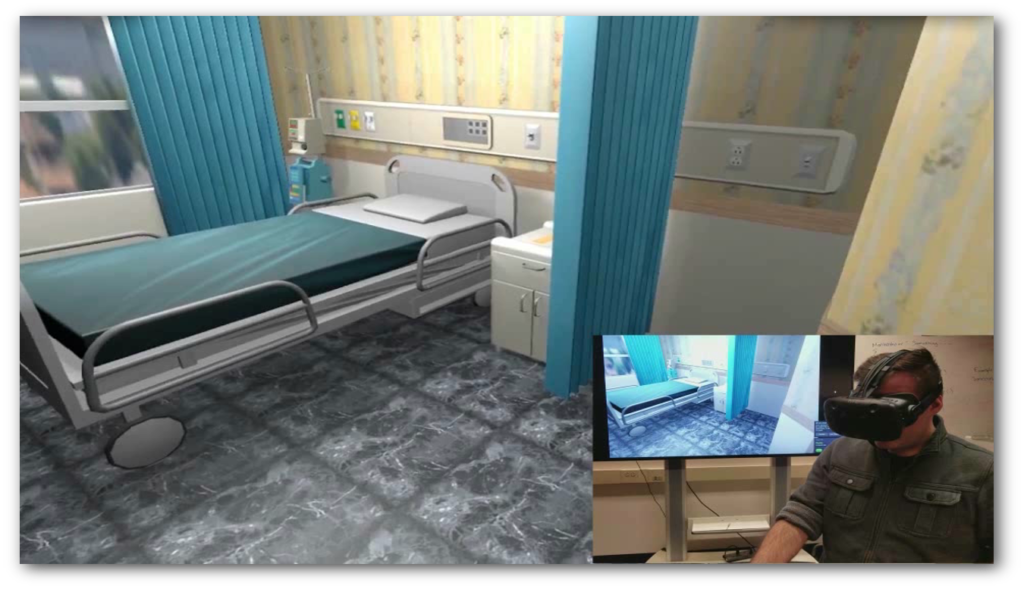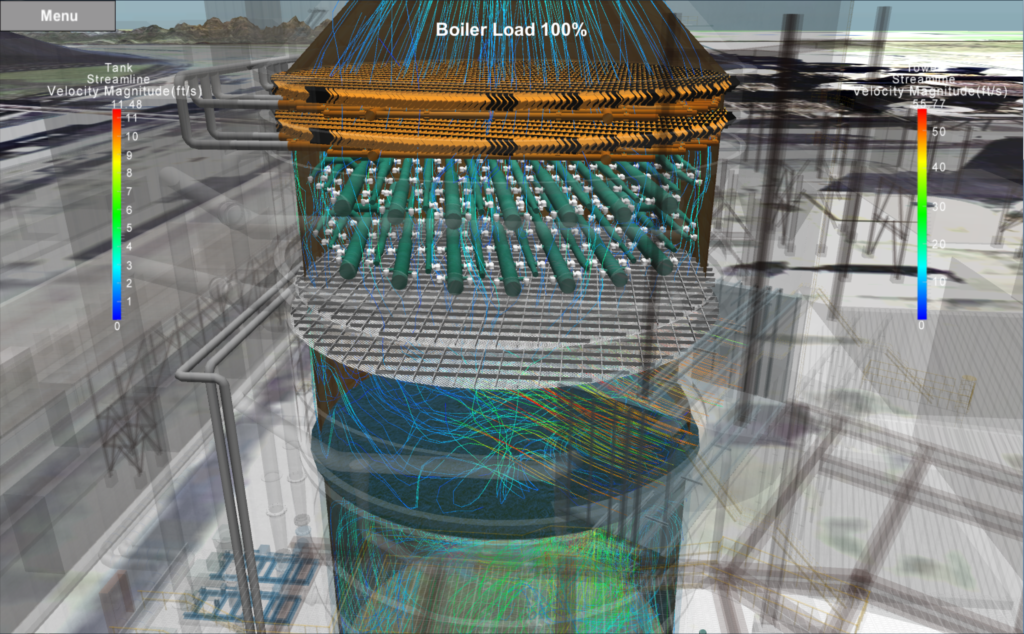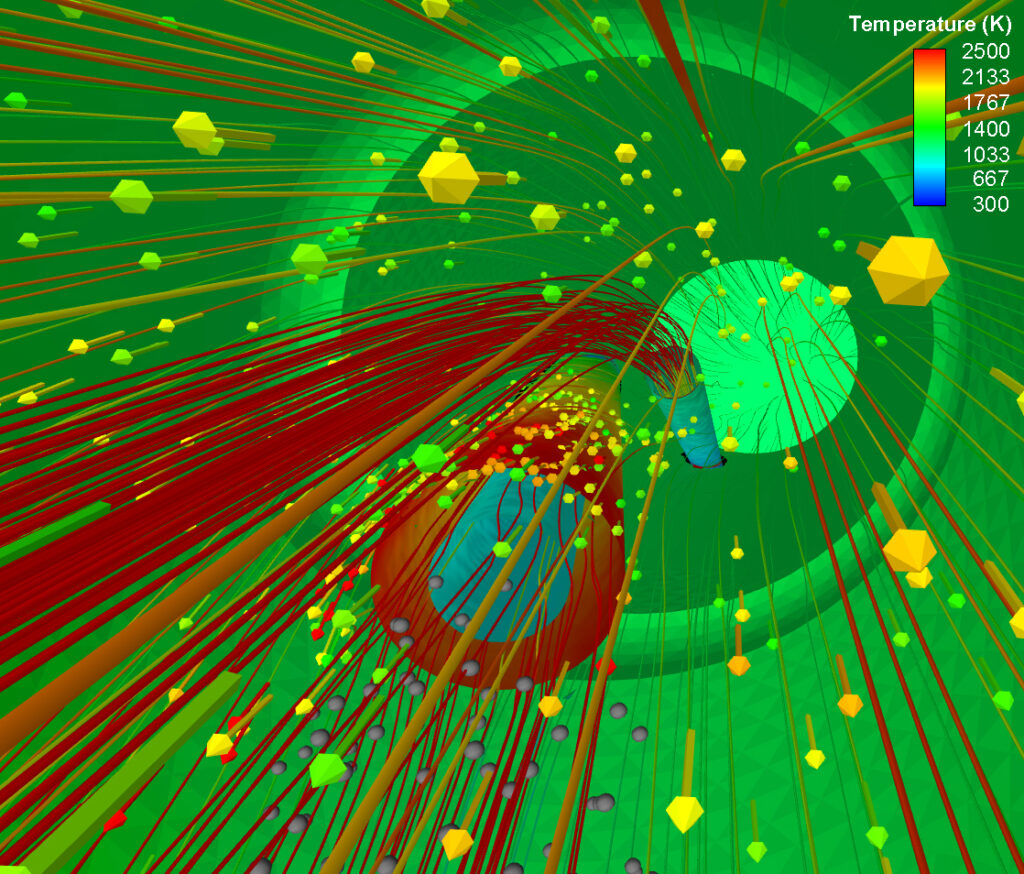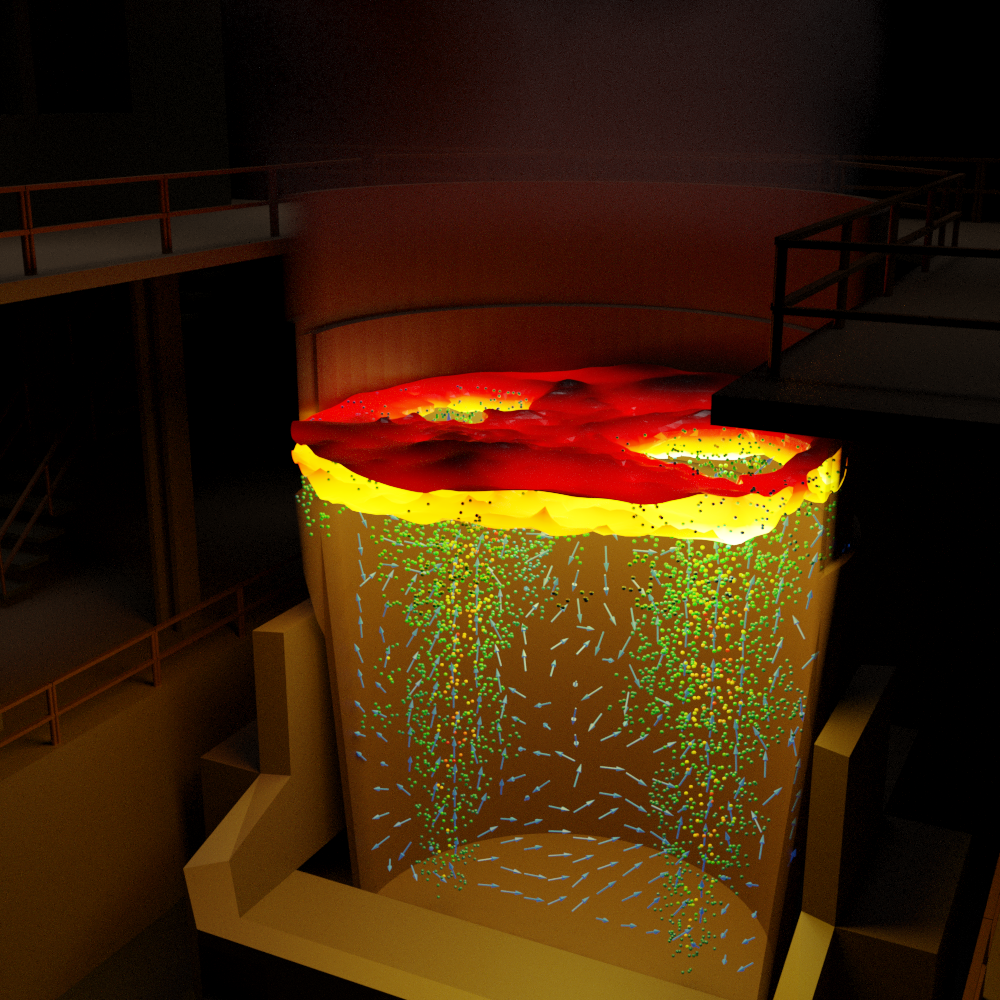CIVS research provides new ways to solve problems! Advanced simulation and visualization technologies have proven their value in solving problems, reducing cost, and saving time for: troubleshooting, optimization, designing, training, education, and scaling up new concepts.
Key Areas across the Value Chain
- Workplace Safety
- Energy efficiency
- Operational efficiency
- Reliability and maintenance
- Workforce Development
- Environmental impacts
- Raw materials
- Smart Manufacturing
- Decarbonization
Employ Simulation, Visualization, and Smart Manufacturing Technologies
Advanced simulation & visualization technologies have proven to be invaluable in solving problems, reducing cost and saving time for:
- Troubleshooting
- Optimizing
- Designing
- Scaling-up new concepts
- Training
- Education
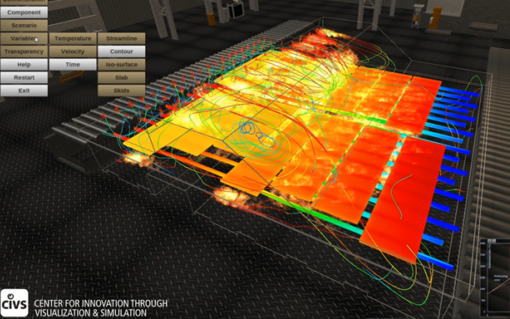
The Benefits of Simulation
Design
Product designs and industrial processes can be numerically modeled before they are physically created to show flow patterns, chemical reactions, heat transfer, fatigue/stress and to predict mechanical failure or expected lifetime.
Optimization
Designs and processes can be updated to increase productivity, lower environmental impact, reduce energy usage, and improve quality.
Troubleshooting
Issues can be identified and corrected before or after implementation to reduce failures, mitigate flow or wear problems and avoid unnecessary downtime.
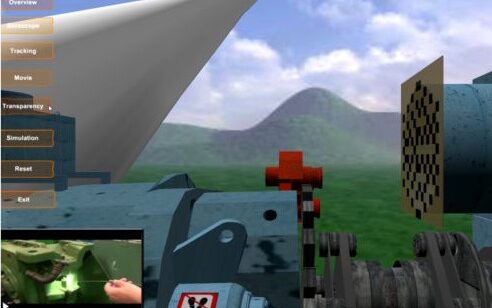
The Benefits of Visualization
Training
VR can be used in an easy-to-understand system for virtual training in environments that might normally be physically inaccessible or impractical to recreate.
Interactive simulators provide lifelike, engaging environments where workers can be guided through work tasks and virtually experience the consequences of both safe and unsafe workplace actions.
Virtual Design and Virtual Learning can be applied separately or together in seemingly unlimited fields.
Project Showcase

Blast Furnace
Researchers and students at CIVS have worked together with many industry collaborators to create a comprehensive blast furnace package combining numerical simulations of various complex processes with a virtual reality blast furnace system, including the 3D Interactive Blast Furnace for Training. The comprehensive package includes typical operation processes such as the charging process, burden descending and gas distribution, coke and coal combustion, bottom hearth inner profile, etc. By converting and combining the numerical data to a Virtual Reality environment, the development of this blast furnace package allows researchers, plant engineers, operators, and other personnel to bring their experiences directly into the design and optimization process. Integrated Virtual Blast Furnace (IVBF) project supported by the Department of Energy
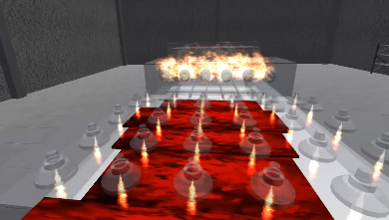
Reheat Furnace
The research project, “Application of High-Performance Computing (HPC) to Optimize Reheat Furnace Efficiency in Steel Manufacturing,” will focus on improving steel reheat furnace efficiency by simulating furnace and process phenomena and developing databases of criteria for optimized furnace operation.

Electric Arc Furnace
Research on the Electric Arc Furnace is ongoing at CIVS, funded by Steel Manufacturing Simulation and Visualization Consortium (SMSVC) members with the aim of providing detailed fundamental understanding and investigation of arc melting using numerical models. The results of these research studies will contribute materially to the field of electric arc furnace (EAF) steelmaking.
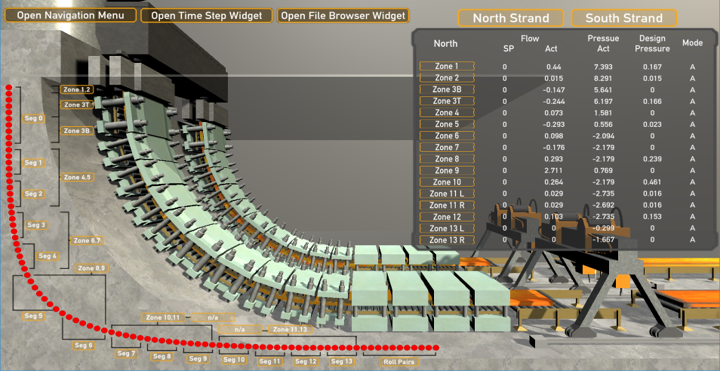
Digital Twin
Digital twin solutions will play a very active role in smart manufacturing. The Center for Innovation Through Visualization and Simulation (CIVS) at Purdue University Northwest (PNW) has partnered with ArcelorMittal and Cleveland-Cliffs to develop a 3-D digital twin prototype for a steel mill. It is anticipated that the continuous caster digital twin can be used offline and online to track casting parameters related to slab quality, as well as equipment, sensor, and modeling parameters related to machine conditions. It can also be used for the virtual training of operators and engineers.
Priority Projects
- Virtual Simulation and Visualization Training: Safety, Operations, and Maintenance
- Optimization of Steel Mill Energy Efficiency
- Direct-Reduction Ironmaking Process Optimization
- Low-Carbon and Alternative Fuel Injection for Blast Furnaces
- Improvement of Control Strategies for Run Out Table
- Optimized Raw Material Handling Design and Practices
- Hydrogen-fired Reheating Furnace Operation for CO2 Emissions Reduction
- Zero By-product Fuel Flare
- Reduce Energy Loss Between Core Processes
- Optimize the Material Flow through a Constrained Facility
- Model Steel Cleanliness Practices at LTS Caster
- Early Intervention Maintenance
- Expert System for Integration of Scheduling, Production, and Materials Flow
- EAF Raw Material Charge Optimization for Reduced Cost and Higher Productivity, including Scrap and HBI
- Richer Integration of Sensors and Data with Process Control Systems for Production Planning
- Simulation and Optimization of Alternative Ironmaking Processes
- Improving Steel Industry’s Image and Attracting/Retaining Workforce
- Hot Rolling Simulation of Advanced High-Strength Steels
- Virtual Training to Improve Workplace Safety and Bridge the Skills Gap
- Interactive Student-Steel Industry Programs and Tools
Partner With Us
With funding support provided by a major AMTech grant from the U.S. Department of Commerce, National Institute of Standards and Technology (NIST), Purdue University Northwest, and the CIVS in 2014 spearheaded the launch of a novel, industry-led consortium of steel manufacturers and stakeholders, now firmly established as the Steel Manufacturing Simulation and Visualization Consortium, or SMSVC.
Do you have any ideas on how simulation and visualization can help the community? Are you curious to find out about the current projects SMSVC is involved with?
Email [email protected] to provide suggestions or learn more about the Center for Innovation through Visualization and Simulation and how we impact the community.
Steel Manufacturing Simulation and Visualization Consortium
Center for Innovation through Visualization and Simulation
Purdue University Northwest
2200 169th St. Hammond, IN
Powers Building
(219) 989-2765
